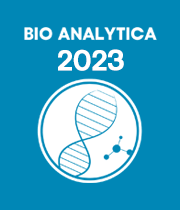Title: Trace-contaminants determination in glycerin samples after a simple dilute and shot approach for analysis by ICP-OES
Abstract:
Glycerol is an organic compound characterized as a thi-alcohol, with high viscosity (1.41 kg sm-1) and density (1260 kg m-3 at 20oC), when compared to water. Glycerol represents around 10% of biodiesel production and it is widely used for sanitary formulations for sanitization. Therefore, contaminant determination in glycerol samples is an important task to be made to assure the quality and safety of this product. No analytical method was found in the literature for the determination of trace elements in the glycerin sample by inductively coupled plasma optical emission spectrometry (ICP-OES). Clasen et al (2015) evaluated the determination of Ca, Mg and K in a glycerin sample by atomic absorption spectrometry, however, the limit of detection is rather higher if compared to ICP-OES, moreover, ICP-OES presents the advantages of multielement determination. Therefore, the aim of this work was the development and validation of a simple dilute and shot method to determine the elements As, Ca, K, Cu, Mg, Na, P, Pb, S, and Zn in glycerin samples by ICP-OES. The effect of the glycerol sample matrix was studied for different glycerin sample masses with samples spiked with 0.5 mg L-1. The developed method demonstrated that sample matrix is a major issue and oxidation with inorganic acids is rather dangerous, thus matrix matching standards were required for calibration using an internal standard (Sc). The accuracy of the method was accessed by recovery tests (ranging within the acceptable range of 80-120%). Different glycerin samples were analyzed and the concentration of these elements was accessed, demonstrating that, perhaps, the monitoring of contaminants in glycerin is an important factor to be considered.
Audience Take Away Notes:
- Trace-elements determination in glycerol by ICP-OES
- Sample matrix from glycerol may affect the determination by ICP-OES
- Methods for diluted and shot analysis by ICP-OES


